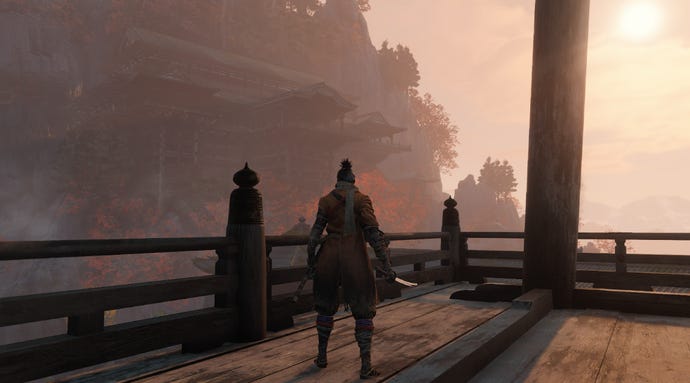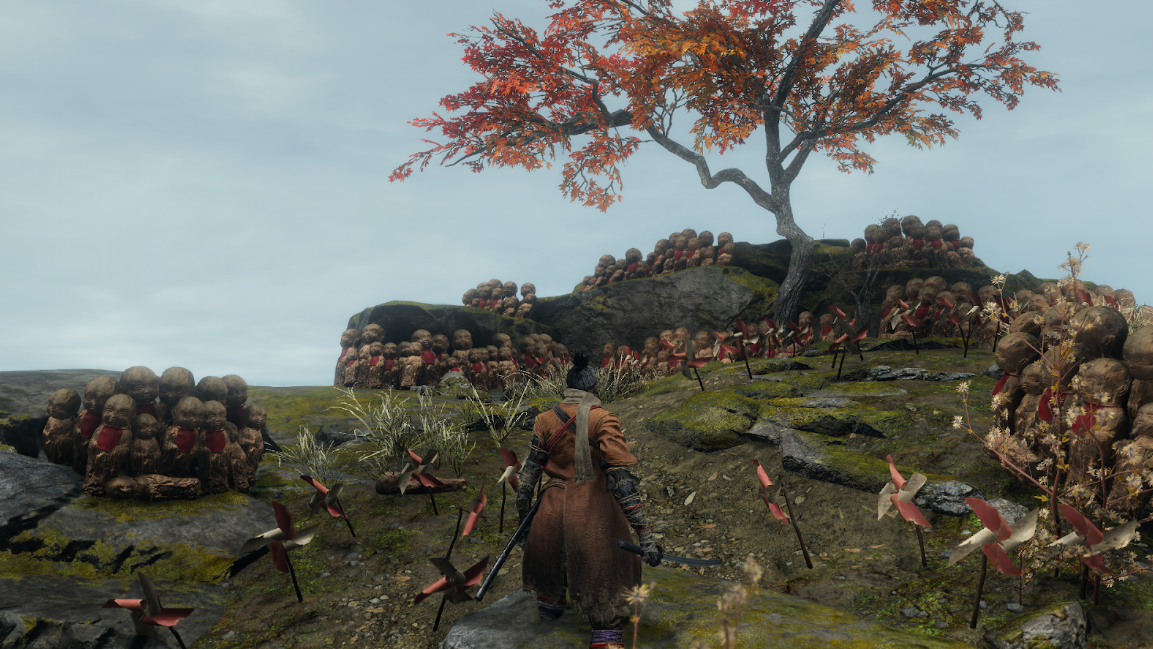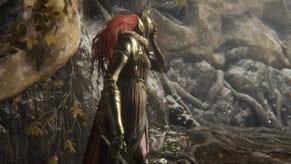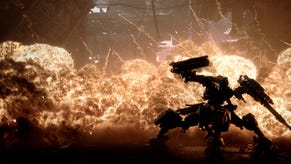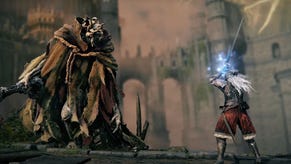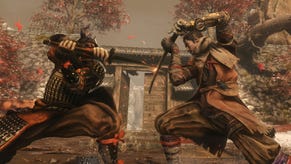Sekiro's most beautiful level hides a dark secret
In Dark Souls’ Ash Lake you can stand on a beach that lets you stare out at calm waters tucked underneath a striking teal sky. Irithyll cuts a gorgeous silhouette against the moon. Cainhurst is an ornately detailed, grand, gothic castle painted with frost.
FromSoftware's games are often full of decay and grotesquery, but also feature undeniable beauty. Beauty infused with dread.
Ash Lake is stark and desolate. Spectres roam Irithyll's streets and its waterways are stalked by hybrids between centipedes and the long-haired spirits that look like they spider-walked straight out of The Ring. Cainhurst hides an immortal queen whose subjects were long-since wiped out.
Series creator Hidetaka Miyazaki has proven more than willing to return to an idea and refine it. There's always a reason to the rhyme, though - a theme being advanced, or a story being told in the cracks of that contrast. Inferring fragments of story from your surroundings is a process of almost archaeological excavation in FromSoftware's work this decade. Sekiro: Shadows Die Twice uses more dialogue and exposition than usual to move the plot along, but it still takes care and observation to put all of the pieces together, to make thematic connections, and to discover revelations about the elaborate world FromSoftware has crafted for the fictional land of Ashina in Japan.
After what amounts to a tutorial sequence in the Ashina Reservoir, ending with your arm being severed by one of the game's primary antagonists, Genichiro Ashina, you awaken in the Dilapidated Temple with The Sculptor hunched over a block of wood. He's carving the wood into a Buddha effigy, identical to the mountain of statuettes in front of him. He gifts you a prosthetic arm and you're off to the Ashina Outskirts to start the game proper.
Shortly after that you might stumble across a sneaky outcropping over the edge of a cliff. If not for the faint glow of lamps, you might miss it. It leads to a crevice with a curious item. It's a stone statue of what appears to be a small child with their palms together in prayer, and wrapped in red cloth. It is a Bundled Jizo Statue, and it can come in handy if you find yourself repeatedly falling to the game's more challenging bosses. They are based on real-life Jizo statues representing the Buddhist Jizo Bosatsu which protects the souls of deceased children.
Upon inspection, you get an item description which reinforces the reference, "Small Buddha effigy bound in red cloth. Raise in prayer between one's palms to restore a node of Resurrective Power. To enswathe a Jizo statue is to express feelings of parental love. The bundle of cloth is to at least ensure that the little one goes on in peace."
Given what they represent, it's a good thing that so few of these can be found throughout the player's journey through the war-torn land of Ashina. In fact, you can count on one hand the number of Bundled Jizo Statues you can find before making it to the game's most beautiful level, Mt. Kongo, about halfway through the game.
Mt. Kongo is autumnal and full of beautiful mountain ranges, rustic temples, and striking red leaves dancing off thick foliage. Taken in a vacuum, it's the kind of serene, picturesque place you might to build a cabin and settle down in. But that beauty does not exist in a vacuum.
The monks of Mt. Kongo's Senpou Temple are hostile, and require you to fight your way through them, but nothing about the orange-clad figures immediately jumps out as disturbing. They seem to just be normal human enemies. There are plenty of benign explanations one could concoct for their hostility. Maybe they are simply territorial and view you as an intruder into their otherwise peaceful land. Without further context, nothing about them raises a red flag. Further up the mountain, however, is one monk leading several others in prayer. They are oblivious, but if provoked the one leading the prayer will projectile vomit onto Sekiro and attract hordes of enormous locusts prowling the temple grounds. This is just the first glimpse of something more disturbing happening on Mt. Kongo. Again, though, without context, it doesn't mean all that much.
After that encounter, you spill back outside. By now, you will probably notice something odd littering the ground: masses of small stone statues. They can be easy to overlook with the stress of fighting the monks to distract you, or the much more abundant beauty of the mountain drowning them out. Even when you do happen to glance down at them in the fields of fallen leaves, they are barely liminal additions to the landscape. It's easy to notice them once and then have them just blend back into the scenery. It's easy because of how rarely you encounter them in the dozens of hours leading up to this point. If you find them curious enough, though, you might pause to think about what they are and remember that you've seen something like them before.
That's when it all falls into place. These are Bundled Jizo Statues - an uncountable number of them. The implications of innumerable statues dedicated to mourning children who have passed on hits like a tsunami. Mt. Kongo's beauty is only skin deep, and the surface something twisted has happened. Using a purely visual callback, Miyazaki tells a story with the environment that upends all initial impressions of the level and chills the bones. Suddenly, those hostile monks and the vomiting monk take on a new, more sinister light. Are they at fault?
As you learn in the latter half of the level, yes, they are. The game's story is about immortality, and in what is perhaps a bit of meta text, the stagnation of not letting something come to an end, like the sub-genre Miyazaki popularized ten years ago. There are many forms of immortality found in Sekiro, and many factions seeking to defy nature to obtain immortality. One such form involves the monks of Senpou Temple "infesting" people with gargantuan immortal centipedes. This is at first hinted at in item descriptions, shown as you encounter unkillable enemies with centipedes bursting out of them. In their machinations to infest people, they wanted to create their own Divine Child, much like the immortal Kuro whom the protagonist serves.
Finally, by the very end of Mt. Kongo, this is all made text when you meet her - the Divine Child of Rejuvenation. She was "infested," by the monks, to use the game's terminology. She was the only success the monks found in their experiments. The fields full of small stone statues are memorials to rest, a reminder of the cost of their endeavours.
Check out our Sekiro walkthroughs and guides to track down the rest of the secrets.
